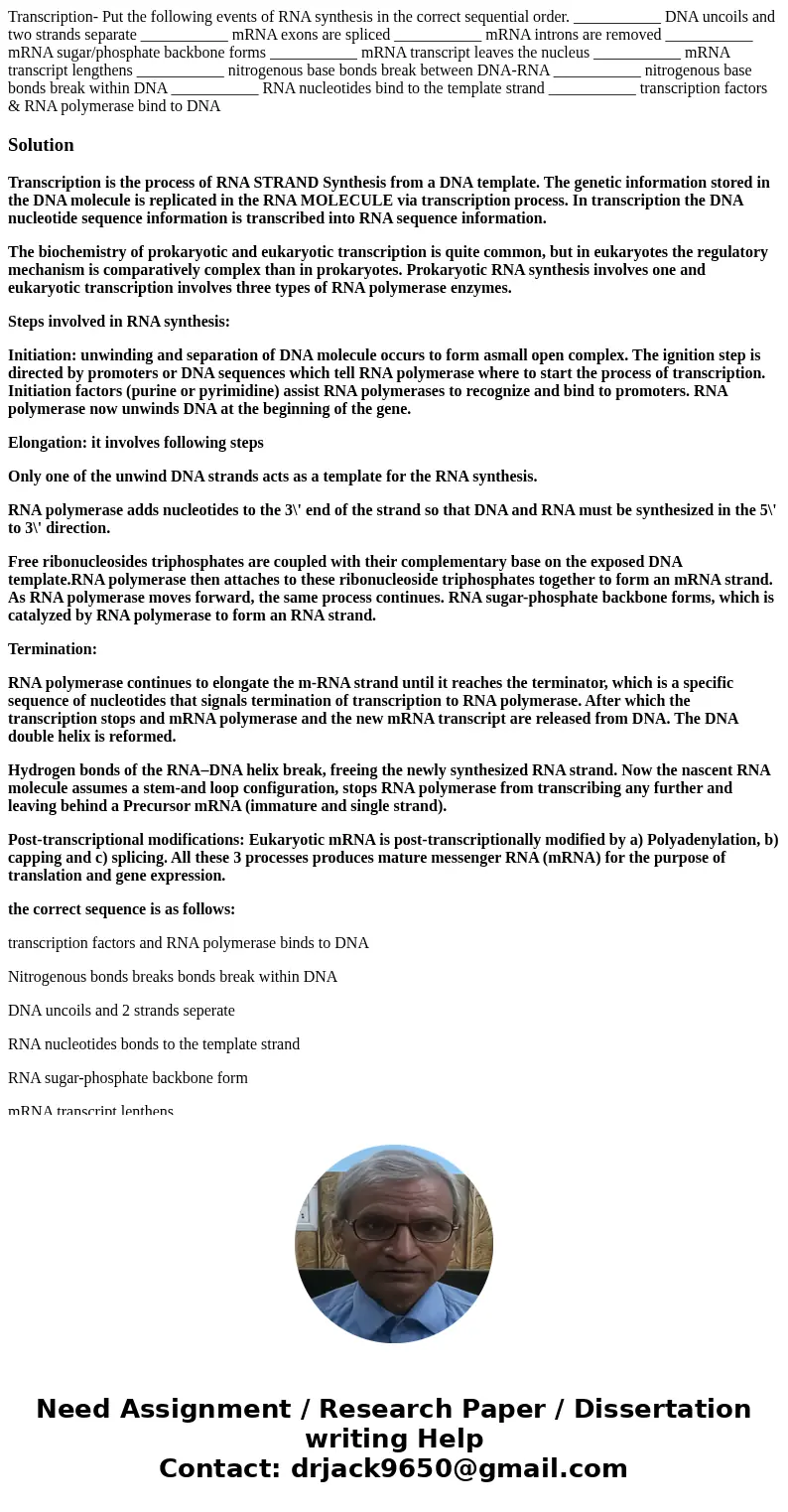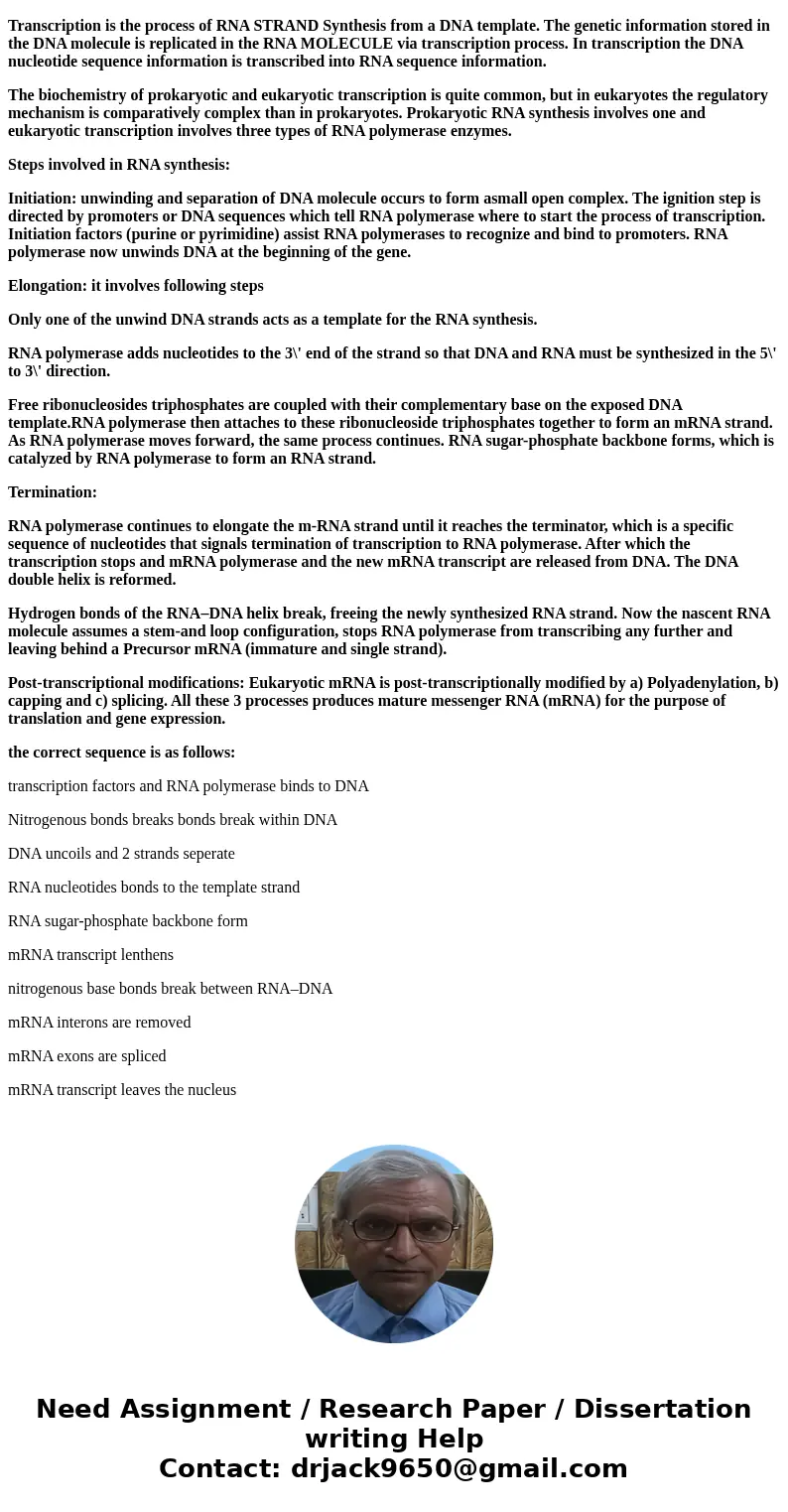Transcription Put the following events of RNA synthesis in t
Solution
Transcription is the process of RNA STRAND Synthesis from a DNA template. The genetic information stored in the DNA molecule is replicated in the RNA MOLECULE via transcription process. In transcription the DNA nucleotide sequence information is transcribed into RNA sequence information.
The biochemistry of prokaryotic and eukaryotic transcription is quite common, but in eukaryotes the regulatory mechanism is comparatively complex than in prokaryotes. Prokaryotic RNA synthesis involves one and eukaryotic transcription involves three types of RNA polymerase enzymes.
Steps involved in RNA synthesis:
Initiation: unwinding and separation of DNA molecule occurs to form asmall open complex. The ignition step is directed by promoters or DNA sequences which tell RNA polymerase where to start the process of transcription. Initiation factors (purine or pyrimidine) assist RNA polymerases to recognize and bind to promoters. RNA polymerase now unwinds DNA at the beginning of the gene.
Elongation: it involves following steps
Only one of the unwind DNA strands acts as a template for the RNA synthesis.
RNA polymerase adds nucleotides to the 3\' end of the strand so that DNA and RNA must be synthesized in the 5\' to 3\' direction.
Free ribonucleosides triphosphates are coupled with their complementary base on the exposed DNA template.RNA polymerase then attaches to these ribonucleoside triphosphates together to form an mRNA strand. As RNA polymerase moves forward, the same process continues. RNA sugar-phosphate backbone forms, which is catalyzed by RNA polymerase to form an RNA strand.
Termination:
RNA polymerase continues to elongate the m-RNA strand until it reaches the terminator, which is a specific sequence of nucleotides that signals termination of transcription to RNA polymerase. After which the transcription stops and mRNA polymerase and the new mRNA transcript are released from DNA. The DNA double helix is reformed.
Hydrogen bonds of the RNA–DNA helix break, freeing the newly synthesized RNA strand. Now the nascent RNA molecule assumes a stem-and loop configuration, stops RNA polymerase from transcribing any further and leaving behind a Precursor mRNA (immature and single strand).
Post-transcriptional modifications: Eukaryotic mRNA is post-transcriptionally modified by a) Polyadenylation, b) capping and c) splicing. All these 3 processes produces mature messenger RNA (mRNA) for the purpose of translation and gene expression.
the correct sequence is as follows:
transcription factors and RNA polymerase binds to DNA
Nitrogenous bonds breaks bonds break within DNA
DNA uncoils and 2 strands seperate
RNA nucleotides bonds to the template strand
RNA sugar-phosphate backbone form
mRNA transcript lenthens
nitrogenous base bonds break between RNA–DNA
mRNA interons are removed
mRNA exons are spliced
mRNA transcript leaves the nucleus


 Homework Sourse
Homework Sourse